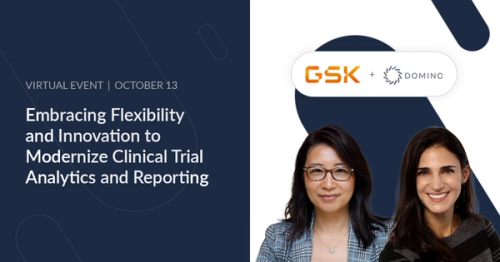
“How do I get business leaders to understand the value we provide?”
It’s a question we hear a lot from data science leaders.
Indeed, as adoption increases, business leaders have become more knowledgeable about data science and its potential benefits. Over the last year, the COVID-19 crisis has elevated the conversation around data and data science as business leaders raced to understand rapidly changing trends and behaviors and predict the potential impacts on their operations.
Yet, there’s still much work to be done to get business leaders fully on board and involved. Ensuring everyone from the C-suite to frontline staff understands and embraces the benefits of data science is critical to successfully creating enterprise-grade data science capabilities. Without strong support and partnership with everyone across the business, it’s not easy to integrate data science into an organization’s DNA.
For data science leaders Matt Cornett (a leading provider of insurance solutions), Patrick Harrison (a global financial intelligence company), and Brian Loyal (Bayer Crop Science), addressing this issue has been top of mind as they’ve built out their teams. Here are five ways for better connecting with the business, and ultimately, building better partnerships. These comments summarize insights shared by Matt, Patrick, and Brian during a recent webinar on Best Practices for Driving Outcomes with Best Science.
Skip the tech talk
It’s not uncommon to hear stories about data science teams promoting their latest neural networks or computer vision work. For Brian Loyal, Cloud Analytics Lead at Bayer Crop Science, such stories exemplify how not to do it. “That’s when you’re going to get a lot of eyes glazed over,” he says. Instead, he recommends that teams start by talking about a particular project’s business context and value. “Saying ‘data science in this space makes sense because we’ve proven we can save a year of our product pipeline or $5 million in research by doing a better job of managing decisions’ helps people understand,” he says.
Listen to Brian Loyal, Patrick Harrison, and Matt Cornett discuss measuring the business value of data science.
Promote results as part of the core workflow
Many data science teams share stories of successful projects but often do so as an ad-hoc effort. Patrick Harrison encourages leaders to build it into their routine so the project isn’t considered complete until they’ve formally shared the outcomes. By doing so, data science teams can consistently and repeatedly bring the value of their work to the forefront. According to Patrick, data science leaders don’t have to (and shouldn’t) start from scratch. Rather, they should tap into existing channels and events that business staff already tune into. “If your company has existing demo days or newsletters, get your teams and your projects added to those venues,” he advises.
Listen to Brian Loyal and Patrick Harrison discuss how to promote data science across the enterprise.
Speak their language
At Bayer Crop Science, Brian Loyal’s team frames projects as part of existing decision processes that the business uses. (They even call the enterprise data science team a “Decision Science” team.) “For example, we’ll show that in addition to other business intelligence or report writing a team is using, we also have some analytical models that can add to the story,” he explains. “Everyone makes hundreds of decisions daily, so using the same language is a good way to go about sharing the work.”
Bring citizen data scientists into the fold
For example, Matt Cornett invites citizen data scientists from the business to participate in the model development processes. “They’re closer to the action and have a lot of domain knowledge,” he says. “By including them, you can strengthen your overall outcomes because you’ve got more business domain knowledge, and you’ve got a connection to that frontline.”
Listen to Brian Loyal and Matt Cornett discuss coordinating with business users, analysts, and citizen data scientists.
Provide training to increase the organization’s digital quotient
Such work can happen informally, as in the case of Bayer Crop Science. For instance, the company’s Center of Excellence (COE) staff make an effort to discuss fundamental data science concepts with business leaders, such as how data scientists extract meaning from data, as they go about their daily work. “Even people who aren’t data scientists can benefit quite a bit from an understanding of the basics,” says Bayer Crop Science’s Brian Loyal.
It can also occur through more formal training. We’re hearing more companies are building out “Data Science 101” types of programs for business leaders. For instance, Matt shared how his company developed an internal training program on how to use data more effectively and interpret visualizations. Classes are open to everyone, from entry-level staff to business managers. Likewise, Patrick says his company, a global financial intelligence business, created a data science academy to provide business analysts, product managers, operations managers, sales, and other business users with a basic understanding of analytics.
Listen to Matt Cornett and Patrick Harrison discuss data science training programs.
To successfully turn data science into a core capability, data science and the business need to be in lockstep. As these companies show, this doesn’t happen on its own. Data science leaders need to be proactive and pragmatic if they are to get business leaders on their side and recognize their value.
Watch the webinar, Best Practices for Driving Outcomes with Data Science, featuring Matt Cornett, Patrick Harrison, and Brian Loyal.
Domino powers model-driven businesses with its leading Enterprise MLOps platform that accelerates the development and deployment of data science work while increasing collaboration and governance. More than 20 percent of the Fortune 100 count on Domino to help scale data science, turning it into a competitive advantage. Founded in 2013, Domino is backed by Sequoia Capital and other leading investors.
RELATED TAGS
Subscribe to the Domino Newsletter
Receive data science tips and tutorials from leading Data Science leaders, right to your inbox.
By submitting this form you agree to receive communications from Domino related to products and services in accordance with Domino's privacy policy and may opt-out at anytime.




